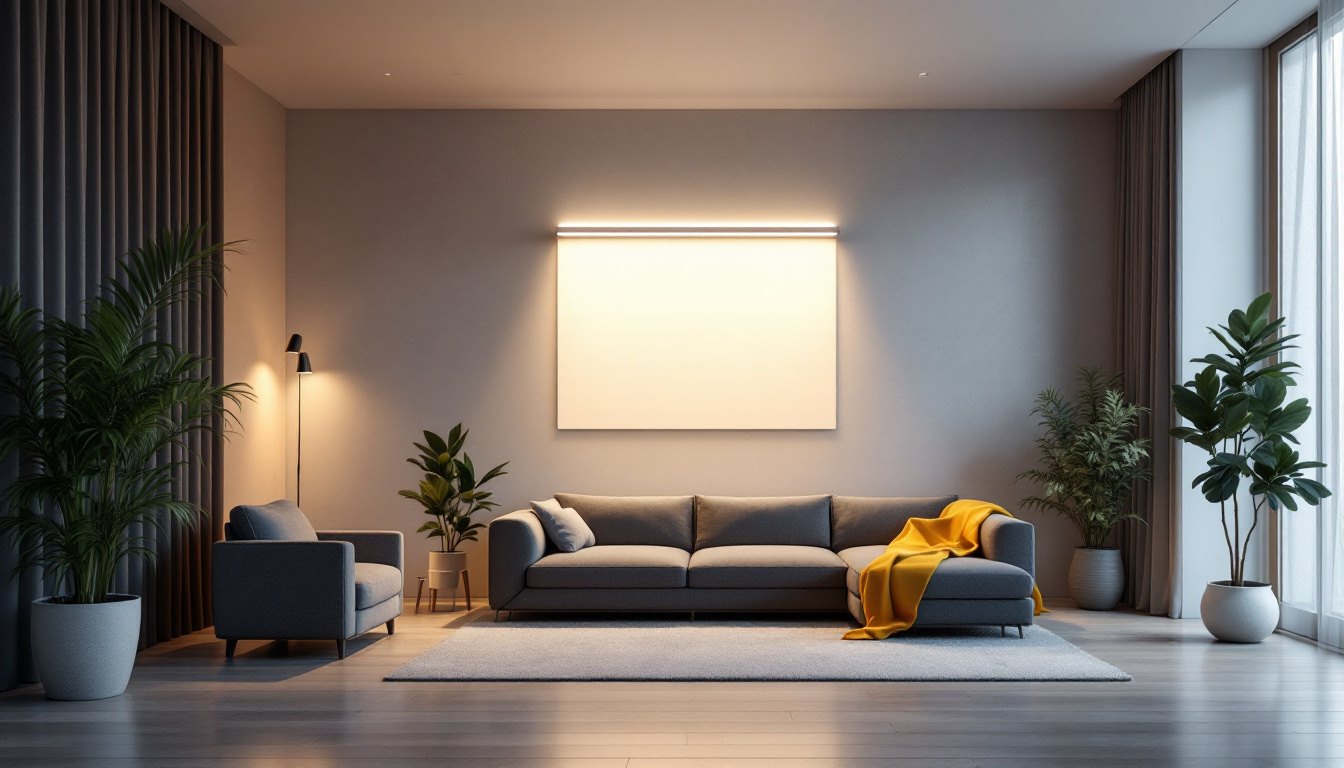
Motion detected lighting systems have transformed the way residential, commercial, and industrial spaces are illuminated. These systems, which automatically turn lights on or off based on movement detection, offer a blend of convenience, energy efficiency, and enhanced security. For lighting contractors, embracing motion detected lighting technology is not just about staying current with industry trends; it’s about unlocking new business opportunities and delivering greater value to clients.
As energy costs rise and sustainability becomes a priority, motion detected lighting solutions are gaining traction across various sectors. Contractors who understand the benefits and applications of these systems can differentiate themselves in a competitive market, improve project outcomes, and increase profitability.
One of the most compelling advantages of motion detected lighting is its ability to significantly reduce energy consumption. By ensuring that lights are only activated when needed, these systems can lead to substantial savings on electricity bills. This is particularly beneficial in large commercial spaces, such as warehouses and office buildings, where lights may otherwise remain on for extended periods. Furthermore, the integration of smart technology allows for remote monitoring and control, enabling facility managers to optimize lighting schedules and further enhance energy efficiency.
In addition to energy savings, motion detected lighting systems also contribute to safety and security. In residential settings, these lights can deter potential intruders by illuminating pathways and entry points when movement is detected, creating a sense of safety for homeowners. In commercial environments, they can help prevent accidents by ensuring that areas are well-lit when occupied, thus reducing the risk of slips and falls. As a result, the implementation of these systems not only meets regulatory requirements but also fosters a culture of safety and well-being for occupants.
One of the most compelling advantages of motion detected lighting is its ability to reduce unnecessary energy consumption. Traditional lighting systems often remain on even when spaces are unoccupied, leading to wasted electricity and higher utility bills. Motion sensors ensure lights operate only when needed, automatically switching off after a preset period of inactivity.
Studies have shown that motion detected lighting can reduce energy usage by up to 30-50% in commercial and industrial settings. This significant reduction not only benefits end-users by lowering operational expenses but also aligns with global efforts to reduce carbon footprints. Furthermore, the integration of these systems can be particularly advantageous in high-traffic areas such as hallways, restrooms, and conference rooms, where the likelihood of lights being left on is greater. By implementing motion sensors, businesses can create a more efficient environment that promotes sustainability while also enhancing the overall user experience.
As sustainability becomes a critical factor in purchasing decisions, contractors who offer energy-saving lighting solutions position themselves as responsible and forward-thinking professionals. Promoting motion detected lighting as part of a green building strategy can open doors to projects with environmentally conscious clients, including government buildings, educational institutions, and corporate offices. These clients are increasingly seeking innovative solutions that not only reduce operational costs but also contribute to their sustainability goals.
Moreover, the adoption of motion detected lighting can enhance a building’s LEED (Leadership in Energy and Environmental Design) certification potential, making it more attractive to clients aiming for high-performance green building standards. By showcasing the long-term benefits of energy-efficient lighting, contractors can effectively differentiate themselves in a competitive market. Additionally, as technology continues to evolve, integrating smart lighting systems with IoT capabilities can further enhance energy management, allowing clients to monitor and control their lighting remotely, thus maximizing both efficiency and convenience.
Motion detected lights serve as a deterrent against unauthorized access and potential criminal activity. When lights suddenly illuminate an area upon detecting movement, it startles intruders and increases the likelihood of detection. This feature is especially valuable for outdoor lighting around commercial properties, parking lots, and residential complexes. The sudden burst of light not only alerts property owners and security personnel but also serves as a psychological barrier, making potential intruders think twice before attempting to breach a property. Furthermore, the strategic placement of these lights can create a well-lit perimeter, effectively reducing shadowy areas that could provide cover for illicit activities.
Integrating motion sensors with security cameras can further enhance surveillance capabilities, providing a comprehensive security solution that clients appreciate. When motion-activated lights are paired with high-definition cameras, the result is a robust security system that captures clear footage of any suspicious activity. This synergy not only aids in real-time monitoring but also provides invaluable evidence for law enforcement if a crime occurs. Additionally, many modern systems allow for remote access, enabling property owners to monitor their premises from anywhere in the world via smartphone apps, ensuring peace of mind even when they are away.
In industrial and warehouse environments, motion detected lighting can improve safety by ensuring that work areas are well-lit only when occupied. This reduces the risk of accidents caused by poor visibility while also conserving energy during off-hours. Contractors can highlight these safety benefits when proposing lighting upgrades to facility managers and safety officers. For instance, in settings where heavy machinery is operated, the sudden illumination of a workspace can alert workers to potential hazards, such as moving equipment or other personnel. This proactive approach not only enhances safety but also fosters a culture of awareness among employees.
Moreover, the implementation of motion-activated lighting can lead to significant cost savings over time. By reducing energy consumption when areas are unoccupied, businesses can lower their utility bills while also contributing to environmental sustainability. Additionally, many motion sensor systems are designed to be easily integrated with existing lighting infrastructure, making upgrades both cost-effective and efficient. As companies increasingly prioritize employee safety and energy efficiency, the adoption of these advanced lighting solutions becomes an essential component of modern workplace design.
Incorporating motion detected lighting into a contractor’s portfolio allows for diversification of services. Beyond traditional lighting installation, contractors can offer smart lighting solutions, system integration, and ongoing maintenance services. This expansion can lead to higher revenue streams and stronger client relationships.
Moreover, as smart building technologies continue to evolve, contractors who are proficient in motion sensor systems position themselves as valuable partners in the broader smart infrastructure ecosystem.
Many existing buildings still rely on outdated lighting systems that are inefficient and costly. Lighting contractors can tap into this market by offering retrofit solutions that replace conventional fixtures with motion detected alternatives. These projects often come with incentives such as utility rebates and government grants aimed at promoting energy efficiency, making the upgrade more attractive to clients.
Successful implementation of motion detected lighting depends on selecting appropriate sensors and fixtures tailored to the specific environment. Factors such as sensor range, detection angle, ambient light sensitivity, and response time must be considered to ensure optimal performance.
Contractors should stay informed about the latest sensor technologies, including passive infrared (PIR), ultrasonic, and microwave sensors, each of which has unique advantages depending on the application.
Effective placement of sensors is critical to avoid false triggers or missed detections. For example, sensors should be positioned to cover entry points, corridors, and high-traffic areas without being activated by irrelevant movements such as tree branches or HVAC systems. Calibration settings, including time delay and sensitivity, should be adjusted based on client needs and environmental factors.
Modern motion detected lighting often integrates with building management systems (BMS), security systems, and IoT platforms. Lighting contractors who can provide seamless integration services add considerable value, enabling clients to monitor and control lighting remotely, schedule automated routines, and gather usage data for further optimization.
Many clients may be unfamiliar with the full range of advantages offered by motion detected lighting. Contractors should develop clear, compelling presentations and demonstrations that highlight energy savings, security enhancements, and long-term cost benefits. Case studies and testimonials can be powerful tools to build trust and credibility.
Each client’s needs are unique, and a one-size-fits-all approach rarely works. Lighting contractors who take the time to assess client requirements and design tailored motion detected lighting systems are more likely to close deals and foster long-term partnerships.
Many jurisdictions offer financial incentives for installing energy-efficient lighting systems. Contractors should be knowledgeable about available rebates, tax credits, and grants, and assist clients in navigating the application process. This added service can be a decisive factor in client decision-making.
For lighting contractors, motion detected lighting represents a significant opportunity to enhance business offerings, improve client satisfaction, and contribute to sustainability goals. By understanding the technical aspects, promoting the tangible benefits, and delivering customized solutions, contractors can position themselves as leaders in a rapidly evolving industry.
As the demand for smart, energy-efficient lighting continues to grow, those who invest in mastering motion detected lighting technologies will enjoy increased project opportunities, stronger client relationships, and improved profitability. The future of lighting is intelligent, and contractors who embrace this shift will be well-positioned for success.
Ready to take your lighting projects to the next level with motion detected lighting solutions? At LumenWholesale, we provide lighting contractors with the highest quality, spec-grade lighting products at unbeatable wholesale prices. Say goodbye to inflated markups and hello to superior lighting that meets the highest industry standards. With our hassle-free bulk buying and free shipping, you can equip your projects with premium, energy-efficient lighting at the best value. Elevate your business and delight your clients by choosing LumenWholesale for all your lighting needs. Discover our extensive selection and start saving today by visiting Wholesale Lighting at the Best Value.

Discover how the right tools can revolutionize lighting installation projects for electricians.

Discover the comprehensive guide to solar powered lights tailored for lighting contractors.

Discover the key considerations and benefits of flat light fixtures for lighting contractors.

Discover the essential facts about cathedral ceiling lighting from expert contractors.